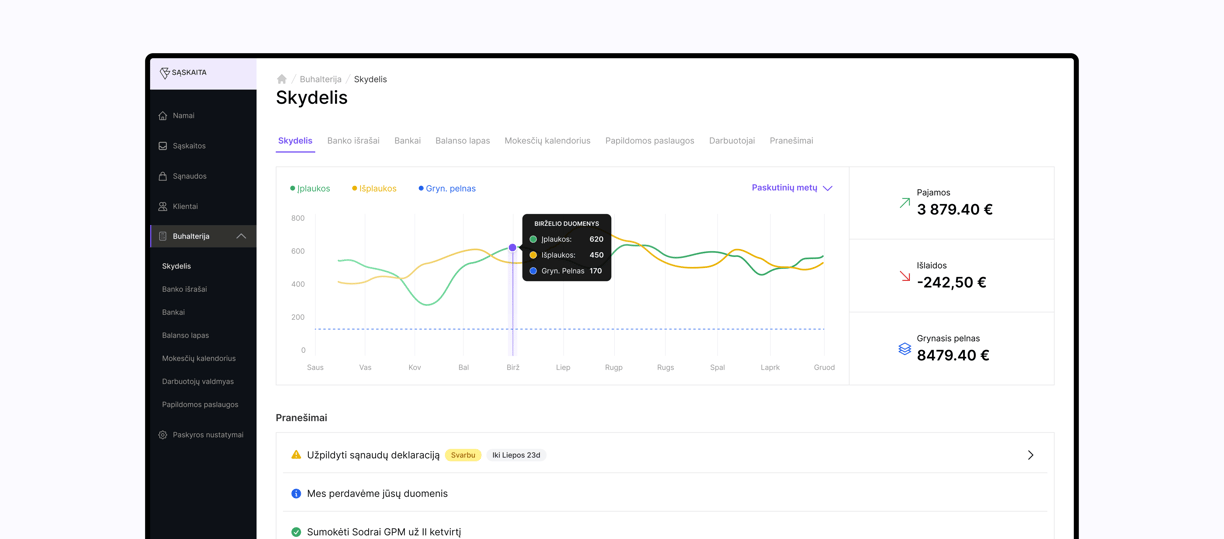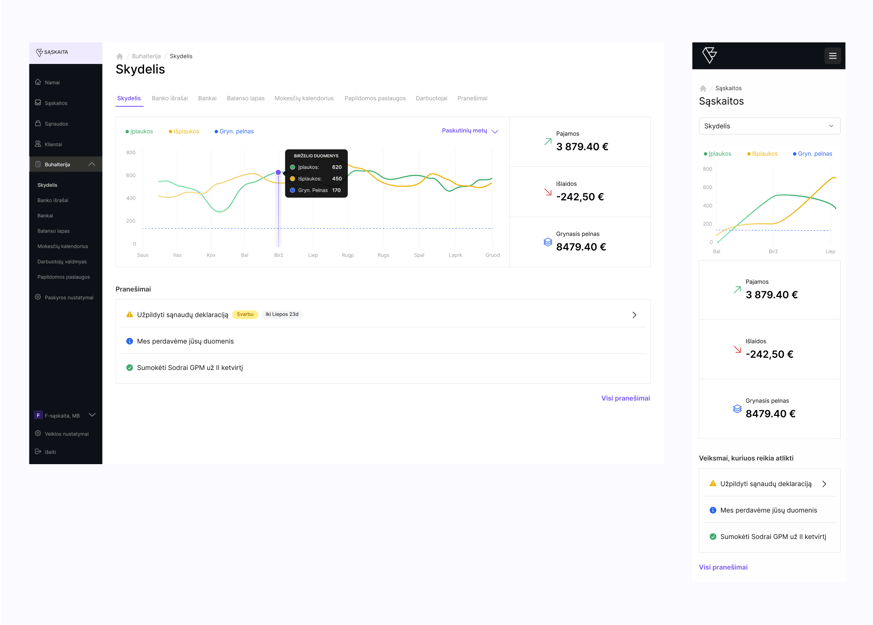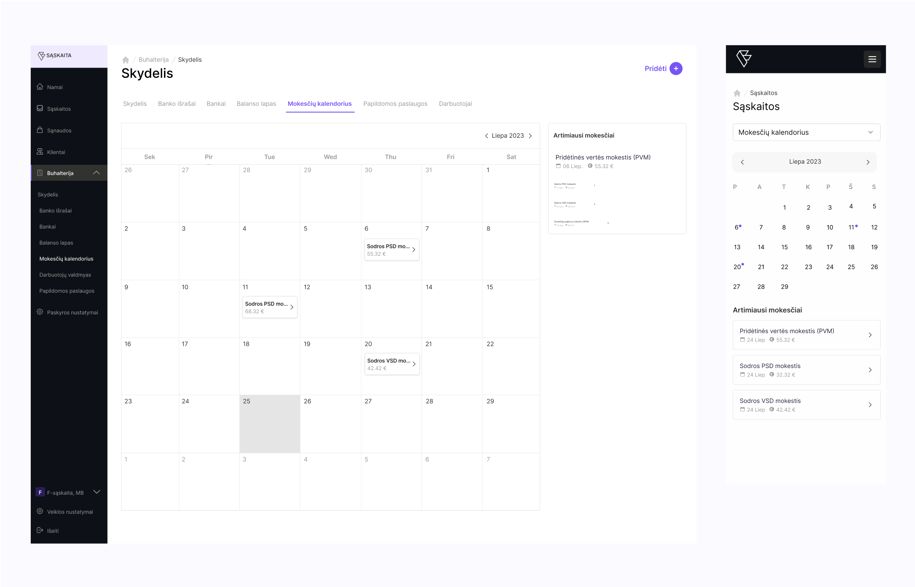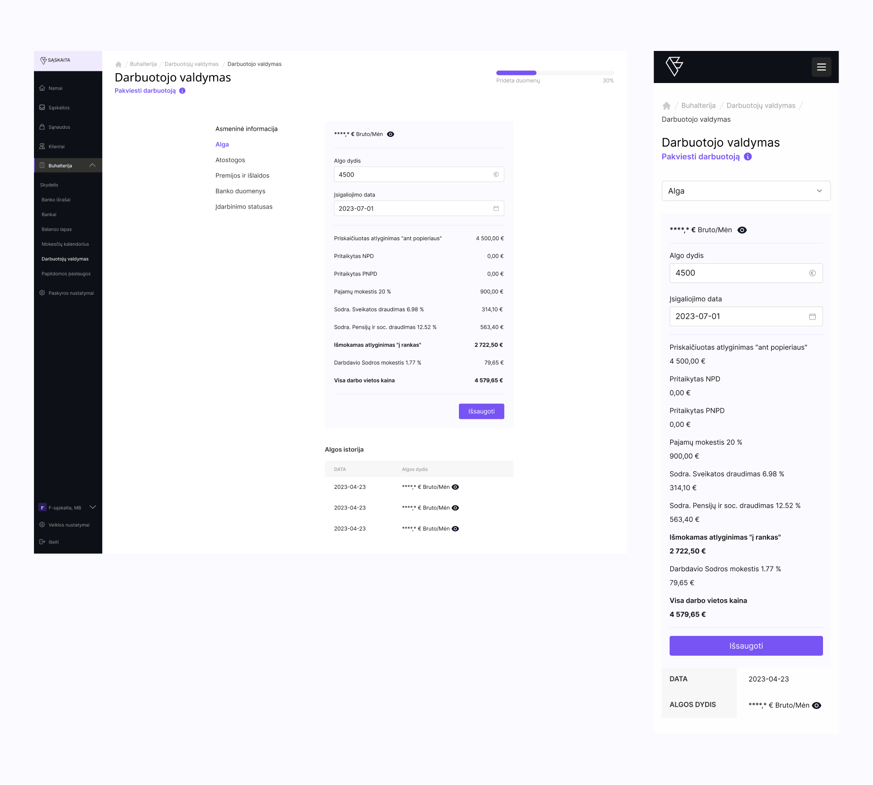Automated Accounting
F-saskaita is a new startup in Lithuania that focuses on fulfilling the region's need for easy invoicing and accounting. Their goal is to simplify your financial processes with automation at the forefront.
By leveraging advanced back-end technology, F-saskaita automates repetitive tasks, saving you time and effort. No more manual data entry or calculations – their system handles it all for you.


Project Brief
F-saskaita embarked on its journey by developing a simple and free invoicing feature to test the market's appetite for such a tool. The primary goal was to assess the readiness of the target audience and explore the tool's potential.
A thorough market analysis revealed that the country had only two competitors, both offering subpar user experiences. This created a remarkable opportunity for F-saskaita to disrupt the status quo and introduce a more modern and enjoyable solution.
Within a short span of less than six months since its launch, F-saskaita achieved significant milestones. The product attracted tens of thousands of pageviews and gained hundreds of active users, indicating a strong product-market fit that exceeded initial expectations during Phase 1.
Now, as F-saskaita enters Phase 2, the brief and the focus shifts toward the creation of a sellable feature: automated accounting.


Establishing a feedback loop
Since the product is still new, it attracts people who love the brand and want to help it succeed. That's why we decided to involve our current users in the design process right from the start.
Here's how it worked:


Testing the wireframes
Once we successfully onboarded over 10 individuals to our user testing program, we developed user flows to illustrate our concept. In this phase, we conducted initial usability testing; however, the concept was still in its early stages, making it challenging to obtain practical feedback.
Following this, we actively gathered input from our users regarding their expectations and desires for the product.


3 Important Pillars
Involving early users of the product was really helpful. They were enthusiastic and gave us feedback on the parts of the business accounting that bothered them the most.
Some of them also mentioned feeling like they were part of something new and exciting, which is great for user retention. We identified three main areas that we need to focus on:
Dashboards
Dashboards were a huge thing for F-saskaita users. They want a fun way to see how their business is doing.
Taxes
Paying and calculating taxes is a nuisance. People want clear reminders on what and when to pay.
Payroll
Paying and calculating taxes is a nuisance. People want clear reminders on what and when to pay.
Core screens
Here are some important screens that focus on the main pillars. During the design phase, we did more than 5 usability tests on different parts. We used both the Maze app and Figma prototypes to gather feedback and make improvements.






Next steps
As this is a huge feature to develop at once, the team agreed to splint into smaller chunks:
First step
Develop and release basic accounting features that calculate your taxes.
Second step
Release of basic employee management to test and see which parts are useful to users.
Third step
Release all automations so that the system would be a ble to do 95 percent of the accounting.
